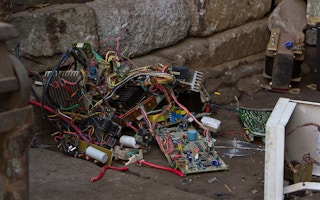The growing volume of electronic waste, including discarded products with a battery or plug, such as mobile phones, laptops, televisions, refrigerators and electrical toys, poses a major threat to the environment and human health, the United Nations warned on Wednesday.
“Environmental protection is one of the three pillars of sustainable development […] E-waste management is an urgent issue in today’s digitally dependent world, where use of electronic devices is ever increasing,” said Houlin Zhao, Secretary-General of the International Telecommunication Union (ITU).
The Global E-Waste Monitor 2017, released by ITU, the UN University (UNU) and the International Solid Waste Association (ISWA), highlights increasing levels of e-waste and its improper and unsafe treatment and disposal through burning or at dumpsites.
In 2016, 44.7 million metric tonnes of e-waste were generated, an increase of 3.3 million metric tonnes, or 8 per cent, from 2014. Experts foresee e-waste increasing a further 17 per cent to 52.2 million metric tonnes by 2021.
“
Environmental protection is one of the three pillars of sustainable development […] E-waste management is an urgent issue in today’s digitally dependent world, where use of electronic devices is ever increasing.
Houlin Zhao, secretary-general, International Telecommunication Union
E-waste contains $55 billion worth of recoverable materials
In 2016, only about 20 per cent, or 8.9 million metric tonnes, of all e-waste was recycled.
“The Global E-waste Monitor serves as a valuable resource for governments developing their necessary management strategies, standards and policies to reduce the adverse health and environmental effects of e-waste,” said Mr. Zhao.
With 53.6 per cent of global households now having Internet access, national e-waste policies and legislation play an important role governing the actions of stakeholders who are associated with e-waste.
Currently 66 per cent of the world population, living in 67 countries, is covered by national e-waste management laws, a significant increase from 44 per cent in 2014.
Low recycling rates can have a negative economic impact. In 2016, it was estimated that e-waste contained rich deposits of gold, silver, copper, platinum, palladium and other high value recoverable materials, whose total value is estimated at $55 billion, a figure exceeding the gross domestic product of most countries in the world.










